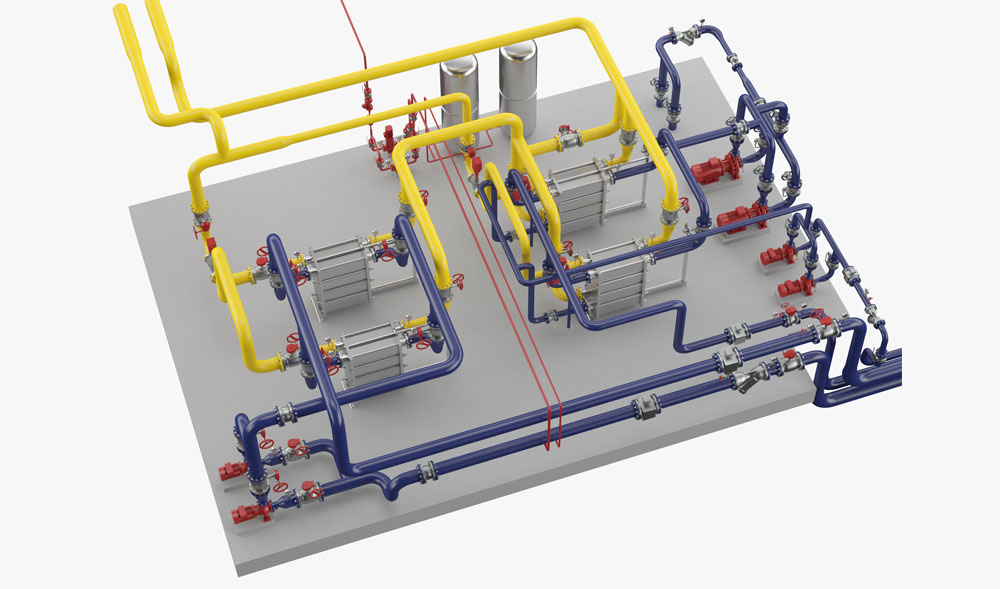A Guide to Hydraulic Seamless Tube Sizes
-
2022-11-10
-

When it comes to a wide array of tube products, seamless tubes are some of the most commonly purchased materials in this industry. However, given the different types of seamless tube sizes and variations, it’s important to understand how these measurements are used. Reduced-wall thickness seamless tubes are one of the most popular options in industries where light weight and compact design are necessary. They have reduced wall thicknesses compared to their standard counterparts and they also have an uninterrupted interior surface with no seam along their length. If you need more information on these types of seamless tubes or would like to know more about any other type available, then continue reading for details on hydraulic seamless tube sizes and other helpful information.
What is a Hydraulic Seamless Tube?
A hydraulic seamless tube is a type of pipe that is manufactured with no seam and no joints using a single piece of steel. This type of seamless tube is used in a wide range of industries, including the oil and gas, chemical, mining, construction, and many others. Hydraulic seamless tubes are available in many different materials and thicknesses. Depending on the material of the tube, seamless tubes can be used for applications where pressure, vacuum, or high temperatures are common. Each material type has specific properties that make it ideal for different applications. Seamless tubes are often used in applications where a large amount of pressure is expected because a seamless tube is less likely to burst under pressure compared to a jointed tube.
Types of Seamless Tubes
– Welded Seamless Tube: Welded seamless tubes are manufactured by first rolling sheets of steel into a tube through a process known as cold-rolling. The rolled sheets are then welded together at the seam. – Cast Seamless Tube: Cast seamless tubes are formed by pouring molten steel into a mold. This type of seamless tube is often used for water or high-pressure hydraulic systems because it can withstand higher temperatures and pressures. – Reduced-Wall Thickness Seamless Tube: Reduced-wall thickness seamless tubes are typically manufactured from carbon steel or stainless steel and they have a thinner wall thickness than a standard tube. This makes it better for lightweight applications where extra weight would affect operation or result in higher fuel costs. They are often used in the automotive and aerospace industries.
Hydraulic Tube Sizes
There are many different ways to measure the size of seamless tubes, including bore, outside diameter, and wall thickness. – Bore: The bore of a tube is the diameter of the tube’s inside wall. – Outside Diameter: The outside diameter of a seamless tube is the diameter of the tube’s outside wall. – Wall Thickness: The wall thickness is the distance from the inside wall to the outside wall of the tube.
Dimensional Requirements for Hydraulic Tubes
When choosing seamless tubes for hydraulic applications, it’s important to consider the operating temperature and pressure. For each type of hydraulic seamless tube, there are two important figures: The maximum working pressure and the maximum operating temperature. For the maximum working pressure, you want to make sure that the seamless tube is able to withstand the pressure of the hydraulic system. To find the maximum working pressure, you need to know the type of material used to manufacture the seamless tubes. Once you have this information, you can use a hydraulic design table to find the maximum working pressure. For the maximum operating temperature, you want to make sure that the seamless tubes will be able to withstand the temperature of the hydraulic system. The type of material used to manufacture the seamless tubes will help determine the maximum operating temperature.
How to Calculate the Wall Thickness for a Seamless Tube?
As previously mentioned, reduced-wall thickness seamless tubes have a thinner wall thickness compared to standard seamless tubes. For example, a 16-gauge seamless tube has a wall thickness of 0.049-inches. To calculate the wall thickness of a reduced-wall thickness seamless tube, you first need to know the standard wall thickness of a standard tube. The standard wall thickness is the thickness of the tube without the reduced wall thickness. Let’s say you want to know the wall thickness of an 18-gauge seamless tube. An 18-gauge seamless tube has a standard wall thickness of 0.047-inches. You can use this information to calculate the wall thickness of an 18-gauge reduced-wall thickness seamless tube:
Why is Wall Thickness Important?
It’s important to know the wall thickness of a seamless tube because it can help you determine if the tube is a suitable option for your application. The thickness of a seamless tube can impact your design, the cost of the equipment, and the overall performance of the system. A thicker seamless tube may be used for a high-pressure application, while a thinner seamless tube may be used for a low-pressure application. Depending on the type of application you need the seamless tube for, a thicker seamless tube may help improve the strength of the system.
Conclusion
Seamless tubes are commonly used in hydraulic systems like hydraulic cylinders and hydraulic pumps. When looking for the right seamless tube for your application, it’s important to consider the hydraulic tube sizes, the operating temperature, and the wall thickness. It’s also important to make sure that the seamless tube can withstand the pressure of the system. If you’re unsure which type of seamless tube you need for your application, speak with a sales representative to help you select the right seamless tube.



